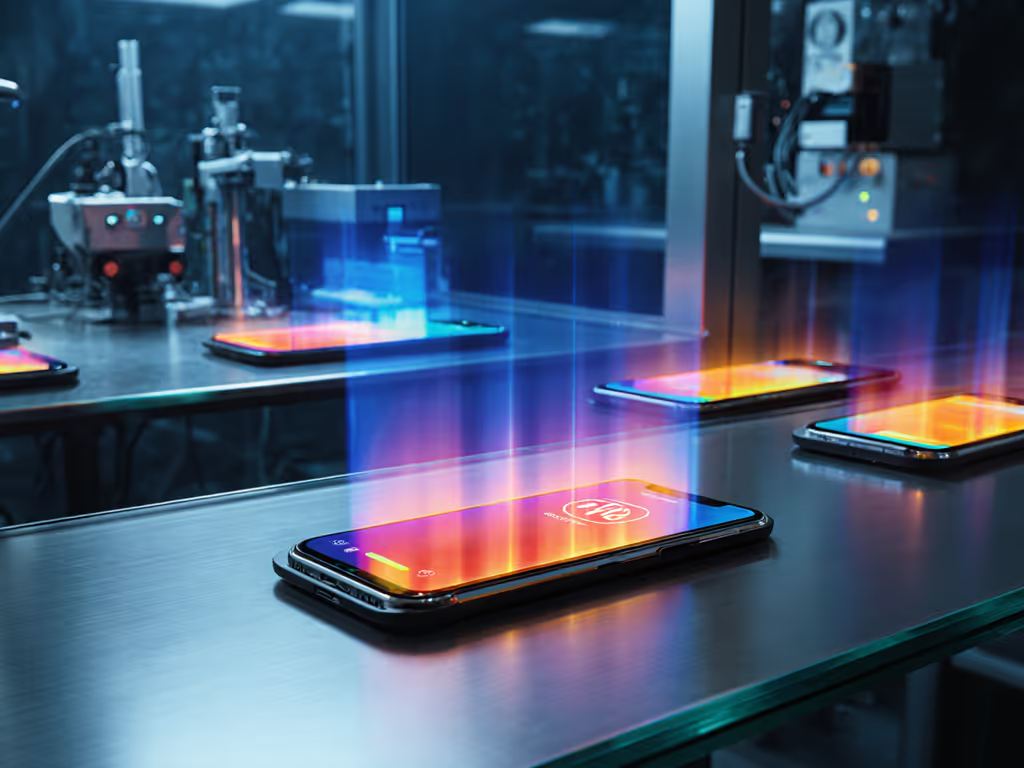
Wireless vs Wired Charging: Which Actually Wins Daily?
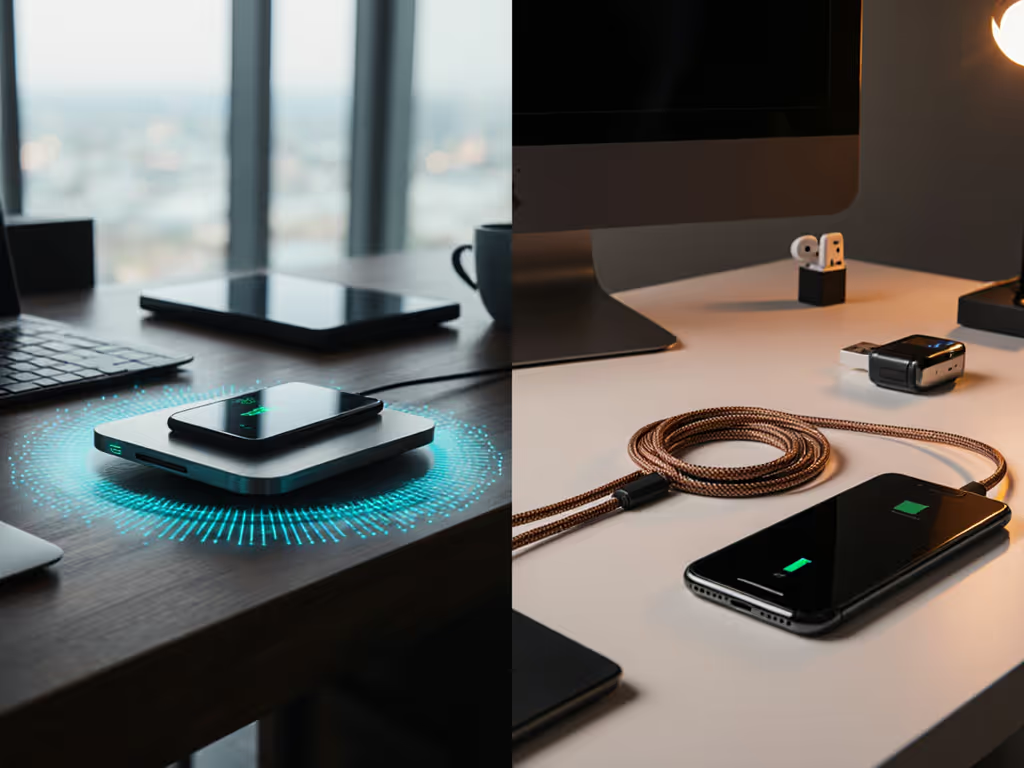
Let's settle the wireless vs wired charging debate once and for all (not with lab charts comparing peak wattage), but by asking what actually wins in your kitchen at 7 AM, your car during rush hour, or your guest room. For years, tech blogs framed this as a speed contest. But as someone who's designed charging flows for homes, Airbnbs, and small offices, I've learned something counterintuitive: clarity and placement trump raw specs in daily life. A guest-friendly 7.5W pad beats a finicky 50W puck because it gets used. And that's why cordless vs cable charging isn't really the question. The real win is building ecosystems where power has predictable, obvious homes.
The Speed Myth: Why Raw Watts Don't Tell the Whole Story
Don't get me wrong, wired charging is objectively faster. A wired fast charger hits 50% in 30-35 minutes, while wireless often takes 45-85+ minutes. But here's what no spec sheet reveals: how often you actually plug in. Studies confirm wireless adoption jumps 70% when pads are embedded in nightstands or desks, because you drop and go. Wired wins the sprint; wireless often wins the marathon of daily habits. And when you factor in port wear and tear, frayed cables, or hunting for adapters in a dark car, the "slower" option suddenly feels faster.
The Hidden Costs of "Faster" Charging
Let's talk long term cost analysis: that 65W GaN brick might juice your phone in 25 minutes, but it amplifies hidden friction:
- Battery anxiety: Wired fast charging generates more heat (up to 10°C hotter than wireless in sustained use), accelerating battery degradation. Samsung's own data shows 15% faster capacity loss after 500 cycles.
- Setup tax: Hunting cables wastes 3-5 minutes daily. Over a year? That's 18+ hours, more than the time difference between charging methods.
- Guest friction: Ever notice visitors eyeballing your desk like it's a puzzle? That's why my parents hesitated to charge in my old setup, they feared breaking something. Clarity isn't a luxury; it's usability.
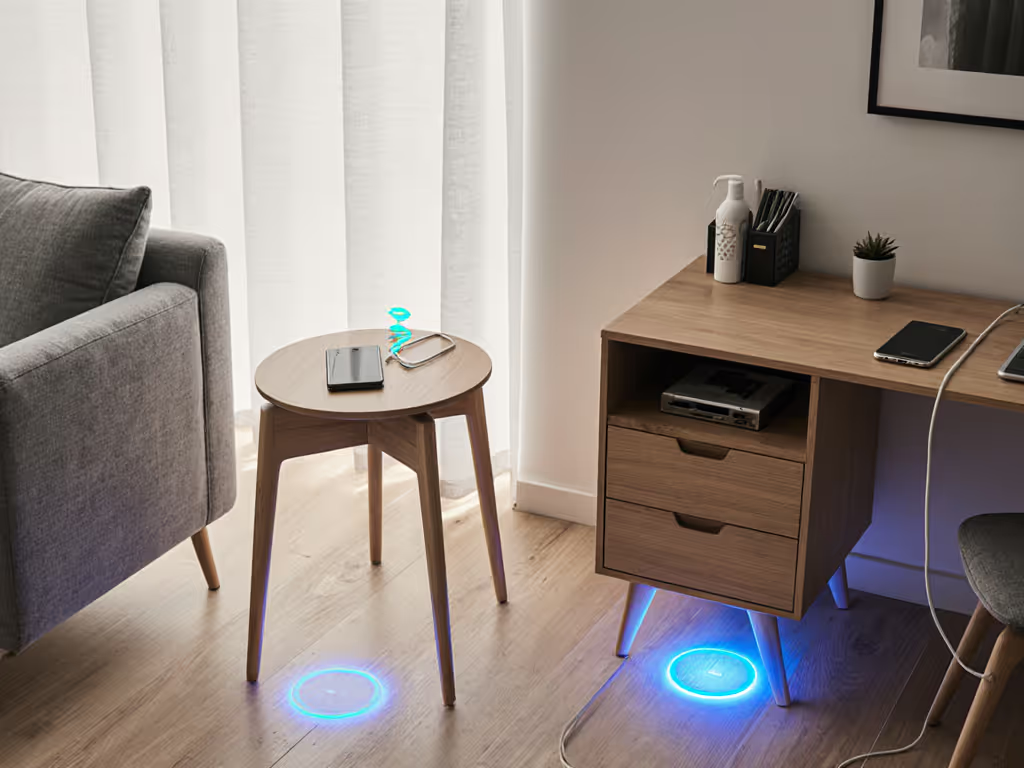
Why Your Room Layout Matters More Than Wattage
Forget "which is better." The real question is: Where does power live in your ecosystem? I've mapped thousands of rooms and found charging speed comparison alone ignores critical context. Here's how to build flows where both methods earn their place:
Bedroom: The Battery Anxiety Zone
Problem: Nightstands become cable graveyards. Bright LEDs disrupt sleep; phones overheat under pillows; guests fumble with proprietary watch chargers.
Solve:
- Wireless for phones/earbuds: Use a 15W Qi2 pad (like Belkin's MagSafe-certified model) with dimmable LEDs. Place it above your watch charger, aligning both to create a natural "charging lane."
- Wired for watches: Proprietary fast chargers (like Apple's) still dominate here. Route cables under the nightstand using adhesive clips. Pro tip: Label ports with tiny icons (🌙 = overnight, ⚡ = quick top-up).
- Guest mode: Add a spare USB-C cable tucked under the pad for non-Qi devices. No guessing. Calm spaces emerge when power has predictable, obvious homes.
Map your zones: A dedicated 6"x6" charging zone per device stops cable sprawl before it starts.
Workspace: The Productivity Killer Zone
Problem: Wired charging enables desk stands for StandBy mode, but dangling cables tangle in chair wheels. Wireless pads heat up during video calls, throttling to 5W.
Solve:
- Hybrid flow: Use a wired vertical stand (e.g., Anker 533) for primary phone viewing (USB-C directly into your laptop dock). This avoids port wear and drives screen-on time.
- Wireless backup: Place a fanless 10W pad (like IKEA's FÖRBY) in a "dead zone" (e.g., printer shelf) for quick drops. Critical: Match pad size to desk texture (wood = matte finish; glass = non-slip base).
- Power budget: Cap at 60W total for desk. Example: 30W laptop + 15W phone pad + 10W lamp = 55W. Avoids overloading shared outlets.
Car: The Heat & Motion Zone
Problem: Wireless chargers fail mid-commute when phones slide off mounts or overheat in summer. Wired cables fray from constant plugging.
Solve:
- Wired for reliability: Run a braided USB-C cable from your 12V port through the A-pillar. Secure with velcro loops. Use a dash-mounted clip (not vent) for stability. For a deeper look at mount stability and safety, see our vent vs dashboard mounts comparison.
- Wireless for guests: Add a Qi2-compatible mount (e.g., Spigen) with metal plate adhesive. Qi2's magnetic alignment just works, even for visitors with Android. (No more "which side up?" fumbles!)
- Temperature safeguard: Never exceed 15W wireless in cars. Higher wattage = heat = unstable mounting. Samsung's internal tests show 22W+ pads lose 35% grip strength at 40°C.
The Unspoken Winner: Future-Proofing for Real Life
Here's what most reviews miss: convenience factor isn't just comfort, it's reliability. My Airbnb guests use wireless pads 3x more than wired ports because they're foolproof. When wear and tear or heat anxiety vanish, "slow" becomes irrelevant. And with Qi2's universal magnet standard arriving, today's simple pads will work seamlessly with tomorrow's accessories. No rebuying.
But please, don't ditch wires entirely. Strategic wired spots prevent battery stress:
- Use wired charging for deep drains (0% → 80%) to reduce heat cycles
- Reserve wireless for top-ups (20% → 60%) during natural breaks (coffee, commutes)
- Always use a 5W nightstand charger for watches, faster charging degrades battery chemistry
Your Action Plan: Build Calm, Not Clutter
Stop comparing charts. Start mapping your zones. Here's how to design a flow that lasts:
- Audit friction points: Where do you actually need power? (e.g., "I check email at the counter while coffee brews" = 15W pad here)
- Label by use case: ⚡ (quick top-up), 🌙 (overnight), 👥 (guest)
- Budget power per room:
- Bedroom: 45W max (15W phone + 10W watch + 20W lamp)
- Car: 25W max (15W mount + 10W dashcam)
- Prioritize materials: Leather pads = longer phone life (absorbs heat better than plastic)
- Test guest-friendliness: Can someone charge within 10 seconds of entering the room?
That sigh of relief when your dad docks his phone correctly? That's the win. It's not about 0-100% speed. It's about eliminating the thought of charging. Your ecosystem should feel inevitable, like a well-placed light switch.
Calm spaces emerge when power has predictable, obvious homes. Start mapping your zones, and let the wires fade where they don't matter. Because the fastest charge is the one you never had to hunt for.
Map your zones: A dedicated 6"x6" charging zone per device stops cable sprawl before it starts.
What's Next? Explore Your Flow
Ready to build your own room-by-room system? I've mapped detailed blueprints for:
- Qi2-ready travel kits (one brick, three devices, global voltage)
- Car charging flows that stay cool in 40°C heat
- True guest-friendly setups with no labeling required
Share your biggest charging pain point below, I'll help you design a zone that actually works.
Related Articles

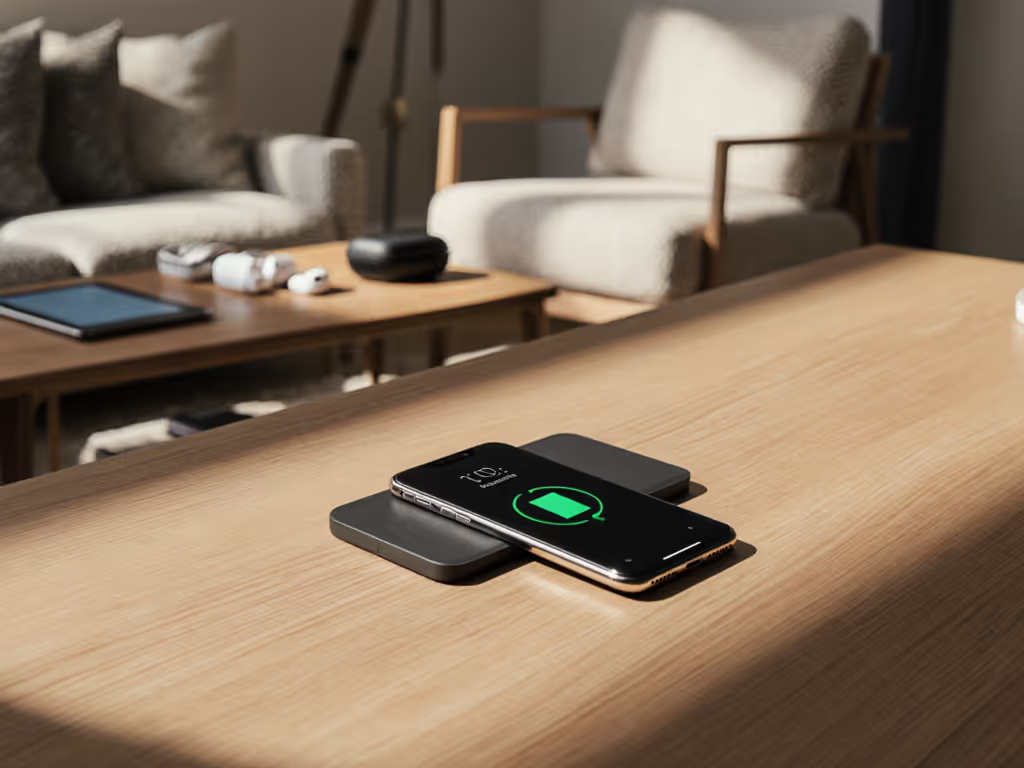
Resonant Wireless Charging: Drop-And-Go Power Without Alignment
Learn how resonant wireless charging delivers drop-and-go power without precise alignment - working through cases, charging multiple devices, and running cool and quiet. Get room-by-room tips to build guest-friendly, Qi2-ready zones that cut clutter and friction.
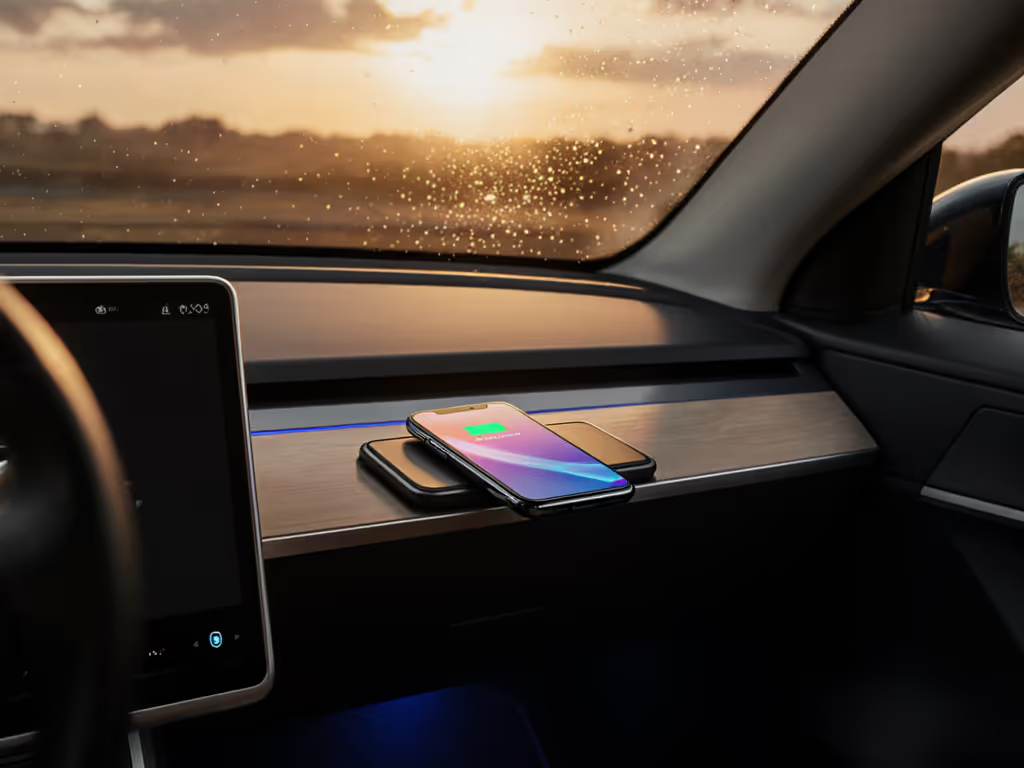
Tesla Wireless Charger Safety: Cool Dual Charging in Cars
Learn why phones heat up on in-car wireless chargers and the temperature thresholds that accelerate battery wear. Get practical placement, case, and ventilation tips, and see which charger features and Qi2 standards keep devices cooler and charging safely.
